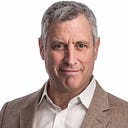The Other Art Shamsky
In 1969, I was an eleven year old Jewish kid growing up in New York and had been a Mets fan my whole life.
This meant that I was no stranger to disaster, constant loss, deprivation, and last place in the National League.
Things brightened when the Mets got Tom Seaver, a Hall of Fame pitcher whose name they literally plucked from a hat, and then a year or so later got manager Gil Hodges, a former Brooklyn Dodger hero.
But they didn’t have nearly the impact on my life that another Met would. The Mets got him from Cincinnati at the beginning of the 1968 season, and his name was Art Shamsky.
I was an obsessive Mets fan, just as I am an obsessive Red Sox fan today. (Moving to New England was just another way to hate the Yankees.)
I was the kind of kid who kept score at games — we all did back then, of course. I also would cut the box scores and standings out of the New York Times each morning and paste them into a notebook. On Sundays, I would pore over the batting averages and figure out who stood where.
The joke is that a book about professional Jewish athletes is a very thin book, indeed. But Shamsky for the Mets was no joke for my friends and me. He was unbelievable. He actually hit 300 in 1969, at a time when pitchers like Steve Carlton, Bob Gibson, Ferguson Jenkins, and Juan Marichal stalked the mounds.
And how I loved Art Shamsky.
At school and at camp, I wasn’t known by my right name. Instead, I was called…Art Shamsky. When I ran for some sort of election at Camp Watitoh in Becket, Massachusetts, in the summer of 1969, I didn’t run as Mike Levin. I ran as Art Shamsky.
And then the Mets won the World Series. From the outhouse to the penthouse, seemingly overnight. Life could not get any better.
Until this week.
I finally got to speak with my idol, 50 years past Art Shamsky.
Or should I say, the other Art Shamsky.
I told him at the outset of the interview, which was focused on his new book, After The Miracle, about the ’69 Mets, how I had taken his name, and he was tickled. We spoke for 40 precious minutes about the Amazin’ Mets of which he was a vital part, and the hope the team generated in those turbulent years of Vietnam, assassinations, and riots.
In 1969, the Mets went from lovable losers to the top of the pile. In the book, Shamsky noted how thousands of people have come up to him over the years to thank him for being a part of a team that brought hope.
We talked about baseball, we talked about hope, and we talked about the tight-knit bonds among the members of that glorious team.
The allocated time flew by, at least for me. Just before I let him go, I asked if I could tell him a story. He said, of course.
It was August, 1969, and my camp counselor was going out with some of the other counselors to Friendly’s, an ice cream and burger place with a location near the camp. I asked my counselor to bring me back a Fribble, a thick ice cream shake for which Friendly’s was justly famous. My counselor told me he wouldn’t be getting back until late, but I said I didn’t care. Just bring me back that Fribble.
And then it was 10:30 or 11 at night, and I was asleep in my bunk when I felt a knee across my chest and I heard my counselor say softly, “Shamsky.” I woke up and had that vanilla Fribble, which is by far the most delicious thing I have ever consumed in my life.
The other Art Shamsky — the original Art Shamsky — loved the story.
He told me that I did a good job interviewing him, and I should keep his number, and if I needed anything, give him a call.
I thanked him for his time and told him that I truly enjoyed our conversation, Shamsky to Shamsky.
Do I feel like a little kid again?
I can’t believe you even have to ask.
